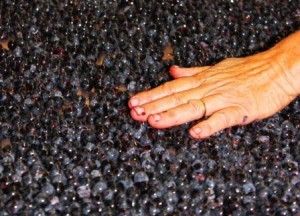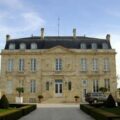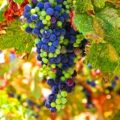With two chateaux to manage, Marjolaine Maurice de Coninck is as busy as a one armed paper hanger during harvest. On the bright side, she does not have far to travel, as both estates are in Margaux, Chateau Marquis d’Alesme Becker and Chateau Labegorce.
Chateau Labegorce offers good value for consumers seeking Bordeaux wine from Margaux. The estate produces a wine that contains some of the highest percentage of Merlot in the Medoc at over 50% of the blend. With new owners, who will do what it takes to get the most from their gravel and sand terroir, managing director Marjolaine Maurice de Coninck discusses what is taking place with the 2011 Bordeaux harvest.
Jeff Leve: Now that you’re finished harvesting and are currently in the process of fermenting your 2011 Bordeaux wine, what are your thoughts on the 2011 Labegorce?
Marjolaine Maurice de Coninck “2011 Labegorce is a more difficult vintage to work with than 2010. After the unusually hot and dry spring, we waited for a normal summer until the beginning of September. We were able to get good yields and a nice balance with ripe tannins and deep color to allow us produce a Bordeaux wine that will age well”.
Jeff Leve: 2011 2011 Labegorce was a difficult, up and down growing season. But things turned around during the harvest for patient growers. Were you able to take advantage of the warm, late September, early October weather?
Marjolaine Maurice de Coninck “Of course we were! September 17 and 18 can be called “a black weekend.” We experienced little rain and cool temperatures during those 48 hours. Nothing good to help the grapes ripen. After these 2 days, summer arrived again, amazing! We had to pick rapidly maturing plots which could not wait. The older vines on the best terroir were able to progress with their ripeness. Then it was easy to wait. We walked in the vineyards to taste and picked when we considered it was time to harvest!”
Jeff Leve: When did you start harvesting for the 2011 Labegorce?
Marjolaine Maurice de Coninck “We started September 19 with the Merlot. We finished October 4 with the Cabernet Sauvignon”.
Jeff Leve: Knowing you like walking the vineyards to taste the grapes from different parcels, did you eat more berries than usual, due to the difficult conditions?
Marjolaine Maurice de Coninck “I am used to eating the grapes for 15 years now. I have always tasted the berries before deciding when to harvest. I really think that for the 2011 Bordeaux vintage, I have eaten more grapes than ever”!
Jeff Leve: Was the order of which parcels you picked first, much different in 2011 Labegorce, than in previous vintages?
Marjolaine Maurice de Coninck “Yes. We waited, hoping to get good weather to obtain the ripeness we needed. This was important. But the young vines or some specific plots could not wait”.
Jeff Leve: How much sorting was involved with the 2011 Bordeaux harvest?
Marjolaine Maurice de Coninck “We sorted more than in previous vintages. I worked with the teams on sorting and selecting tables to be certain to obtain the best selection. It was hard, long hours, but it was necessary”.
Jeff Leve: Can you describe the style of your 2011 Bordeaux wine?
Marjolaine Maurice de Coninck “Our wines have a high level of tannin with good balance and color. In more recent vintages, like 2009, we had low acidity. 2011 has a higher acidity level than 2010. This is a good point for ageing time in the wine”.
Jeff Leve: What specific choices will you need to make during the vinification for 2011?
Marjolaine Maurice de Coninck “We are doing a long, slow and cool extraction. Because 2011 has a high level of color and tannins, we really need to work to retain the richness to help create a fleshy and well balanced wine. Along with a slow, cooler extraction, we’ll alter what we do when it comes to out barrel ageing as well”.
Jeff Leve: Do you use the same vinification techniques at Labegorce and Marquis d’Alesme?
Marjolaine Maurice de Coninck “No. They are different. At Labegorce, during the vinification, we start at low temperatures, to keep the fruit. Later, the hot maceration is done gently, step by step. We want to avoid getting too much extraction”.
Jeff Leve: Can you please share some technical information on your potential alcohol levels, pH and IPT numbers?
Marjolaine Maurice de Coninck “We will reach around 13° alcohol. The pH is between 3.6 and 3.8. Our IPT numbers range from 90 to 110!”




